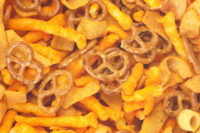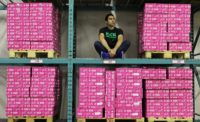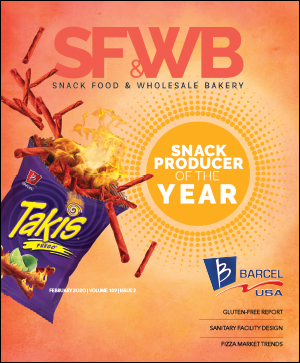Recessions are never pretty. Nor economic recoveries fast enough. Looking for another truism to make it a trifecta? Innovation isn’t instantaneous.
As coauthor Ed Hess says in his recently published book, The Physics of Business Growth: Mindsets, System, and Processes, “Growth exploration and innovation are inherently messy and seemingly inefficient—the complete opposite of how big corporations want to run—and they don’t and won’t happen overnight. That is a very hard pill to swallow in today’s ‘do more with less’ environment.”
So how can one do more with less and still be innovative? According to Hess, innovation and execution can exist together. Nonetheless, it takes a different mindset to accomplish both objectives.
“Can an execution culture and an innovation culture exist simultaneously in a company?” asks Hess. “We think so. Learning is the bridge that connects operational excellence and innovation. A learning culture with different learning processes and tolerances for failure, for innovation and for operational excellence is the answer.
“If you want more innovation and more growth experimentation as well as operational excellence, there are many ways to achieve it,” he adds. “Empower and create small innovation teams. Protect those teams from the dominance of the ‘no-variance’ operational excellence mindset. Create a safe zone where experimentation failures are learning opportunities.
“Do not punish failures; instead, celebrate the learning that comes from trying,” Hess says. “And finally, understand that growth experimentation is a probability game, and the sooner you get customers actively engaged in your experimentation game, the more likely you will win.”
Another recommendation Hess and and Liedtka pass along to executives seeking to jump-start innovation at their companies involves “value-added” thinking.
Noting that most scientific discoveries are built upon extensive learning from prior experiment, the authors say the same holds true for innovation. “Innovation is an iterative experimentation learning process.”
As Hess points out, “Most innovations are not industry-changing disruptions.” Rather, they are “…close-to-the-core improvements or add-ons or extensions to adjacent markets. The kind of ideas we want to generate—the kind we’ll call creative—are all about creating new value for customers. We don’t care if it’s already been tried or looks like ‘old wine in new bottles’ or has been borrowed from another industry. Does it create value for your customers that no one else has yet offered them? If the answer is yes, congratulations! You’ve got a winner. Chances are, most of the components of the valuable ideas generated will have been floating around in some form or another—perhaps for decades. Good innovators learn how to combine existing things.”
In that light, Candy Industry’s tenth annual Leaders in Innovation section showcases suppliers who — in partnership with their customers — stimulate thought processes, develop product concepts, engineer efficiencies, introduce new processing lines and establish new market segments to keep confectionery categories vibrant.
In their own words, executives from equipment, ingredient, packaging and services companies offer their insights on how they view the innovation process and how it’s more critical now — more than ever — to foster growth in the industry by enhancing value for customers.
Aasted: Merger continues to spawn innovation
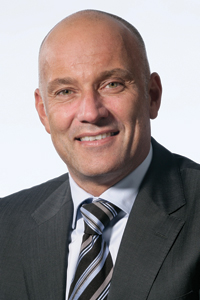
|
| Mads Hedstrom, chief sales officer, Aasted |
Since merging under the name Aasted, Aasted-Mikroverk and A.E. Nielsen Maskinfabrik — both worldwide market leaders with their production lines for the chocolate and baking industries — have continued to amplify the level of innovation occurring at the company.
The newly formed group — which also includes Aasted DFT, a subsidiary that sells large bakery oven lines for industrial production — operates out of one site in Farum, Denmark.
“This merger places us in an even better position to serve our customers by supplying complete processing lines as well as individual machinery and equipment,” says Mads Hedstrom, chief sales officer — sentiments echoed by Allan Aasted, the group’s chief executive.
“The three product programs complement each other perfectly,” he adds. “Today our customers expect us to be the supplier of all equipment needed for their projects. By combining the strengths of Aasted-Mikroverk, Aasted DFT and A.E. Nielsen, we feel sure that we will be able to serve our customers even better.”
As a result, Aasted now is able to supply complete chocolate and bakery solutions as well as individual machinery and equipment within a very broad portfolio for the global market.
Aasted maintains its position as a world-class supplier of chocolate moulding lines, tempering machines, enrobers, cooling tunnels, chocolate and confectionery depositors and extruders, bakery lines, bakery depositors and extruders, bakery ovens and auxiliary equipment, and are proud to introduce the latest innovations from Aasted:
The Aasted SuperNova Energy tempering machine that saves at least 50% in total energy consumption compared to traditional machines.
Various new SF chocolate depositors
New sanitary design of Nielsen cooling tunnels
Nielsenenrobing lines with the impressive belt width of 2,600 mm
A new compact extruder concept
Improved parts and service initiatives at Aasted that strengthen the after-sale of spare parts, line rebuilds and service options, such as process review, reengineering, consultancy, installation and commissioning as well as training in processing and product development.
Aasted looks to transfer synergies gained from the merger toward customer partnerships, using innovation and insight to address the ever-demanding challenges present in the bakery and confectionery business.
Caotech: Cooperative innovation
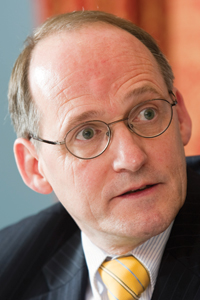
|
|
Jan Hammink, managing director, Caotech |
Innovation at Caotech is a daily practice and mostly done in cooperation with our customers. Based on their feedback related to the processing of cocoa, chocolate and compound, we are improving our machines constantly.
For example, more and more maintenance and energy costs are becoming a key issue for deciding which machine is most suitable.
In cocoa processing, the company has developed a high-capacity beater blade mill (N 5000) and a ball mill (CAO 4000). A throughput of more than 5,000 kg/hr saves our customers surface area, energy and maintenance costs. Also, in cocoa grinding, significant reductions in spare part costs can be achieved in many cases by using our improved spare parts.
For our chocolate processing customers, Caotech has designed an efficient, high capacity machine — the CWC 2000 — for the continuous wet conching of chocolate and chocolate-related masses. The capacity for this single machine reaches a maximum of 2,000 kg/hr.
Many times energy costs can be reduced with minimal investment cost by improving existing machines, resulting in payback periods of around one year.
In today’s environment, many of our (potential) customers want to conduct trials before deciding to purchase equipment. The company has invested in a new test facility — in addition to the laboratory ball mill refiner and laboratory conche (both 5 kg batch capacity), customers now have access to a production machine that demonstrates performance capabilities.
Furthermore, the company has laboratory ball mills, which can be rented to conduct trials at our customers’ locations. It’s clear that many companies see this as an excellent tool for product innovations.
For several years now, Caotech has become a major player in grinding processing equipment for the cocoa and chocolate industry. To maintain this growth cycle while enhancing our leadership position, the company recognizes it must continue to have fast response times while being flexible, reliable and innovative. Moreover, it’s become a daily focus.
Carle & Montanari – OPM: Good companies choose synergy

|
| Moreno Roncato, chief executive officer, Carle & Montanari - OPM |
With the goal of becoming more and more competitive, Carle & Montanari - OPM (CM-OPM), a joint venture of IMA and SACMI, have combined their know-how to offer customers a unique one-shop center capable of providing complete turnkey, high quality solutions for processing, moulding and packaging operations.
In this manner, the two have integrated their extensive experience and competencies to optimize technologies within the confectionery industry.
Innovation is a key goal, keeping in mind that it stands not only for new products and new technologies, but also for the successful implementation of creative ideas. In this view, creativity is a starting point for innovation.
This allows us to realize turnkey solutions that satisfy our customers’ requirements, an ever-present intent on our end. Thus, every innovation is specifically created to meet the market’s demand for flexibility and performance.
Therefore, we are both widening our range of products and constantly developing our technologies, engineering new accessories and equipment.
Some of our latest technological innovations in packaging are the following:
Fin folder
Shuttle for the multipack loading
Slug rotary transfer device
Stacking chain
In order to meet the increasing demand of our customers who want to move from X-fold wrapping to the airtight guarantee provided by flow-wrapping, CM-OPM developed a dedicated vertical packaging machine, the fin folder. The unit is able to refold the front flap of a wrapped product, thereby obtaining the typical “brick” aspect of the X-fold products.
The vertical CM-OPM equipment has a very compact footprint (1,000 x 1,000) and can fold up to 120-150 products/min; it also handles packages with “important” dimensions (150 x 60 x 60), which could be (with the help of additional equipment) both rectangular and cylindrical.
CM-OPM’s new multipack loading shuttle with a double servomotor is perfect for applications where it is necessary to pack flow-packed multipacks of bars at a speed of about 700 pieces per minute. This shuttle can be added to the integrated line made up of the flow-wrapping machine and the power cell in order to increase the efficiency and the production speed.
In order to increase the production speed of the Power Wrapper SL for slugs of biscuits, CM-OPM developed a double-servomotor rotary transfer, able to reach a speed of 220 packs/min.
This system, based on a mechanism with timing belts, allows users to transfer the portions of biscuits from the flightbar chain of the loader to the feeding chain of the flow-wrapper, which makes the speed of pickup of the slug independent from the speed of deposit, thus preventing sudden accelerations or shocks to the product. The format change is facilitated by a quick coupling system of the transfer hands, which allows a change in the size of the slug in a few minutes.
To stack irregular-shaped biscuits without the use of complex feedings, OPM has developed a stacking system which, starting from an in-line stream of biscuits, is able to create packages of one or more piles that can vary in height from one to three biscuits.
This system (completely servo-driven) is able to accept up to 700-800 biscuits per minute and to transfer the stacks created to a flow-pack for the subsequent wrapping.
It can work with die-cut biscuits crackers, wire-cut biscuits or sandwiches. The system (driven by two servomotors) is composed primarily of a chain and an overhead grouping device to transfer the different piles of biscuits in the same package.
In this way, CM-OPM technologies reflect our constant effort to combine know-how and research to meet customer requirements.
Chocotech: The meaning of true innovation
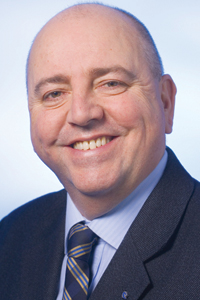
|
| Martin McDermott, director of sales, Chocotech |
What does it mean to be a leader in innovation? Does it mean introducing a new machine every three years at interpack so that when a customer asks, “What’s new?” you can give a big smile and say [fill in the blank]? No, this is not innovation, this is improvisation.
Innovation to me consists of continuous improvements with one’s design team on existing processes as well as having a “dedicated” engineering crew focused on new developments.
This is what Chocotech is all about: the design, manufacture, installation and commissioning of confectionery kitchen processes in combination with our customers.
Having a well-educated international team of employees who speak a wide variety of languages enables us to understand and truly comprehend our clients’ needs.
It also means having a modern production facility that houses a world-class machining and assembly facility, one that allows the majority of our processing lines to be manufactured in-house and offers excellent working conditions for the employees
And, it means having 600-sq.-meter sugar confectionery “state-of-the-art” test lab, home to our entire equipment range, which allows our customers to conduct trials ranging from small-scale recipe development projects to full-scale production runs of more than 1,000 kg/hr. Afterwards, trial results can then be analyzed using our Karl Fischer equipment.
In addition, Chocotech also has a chocolate lab for testing products with fillings produced on our Frozenshell line or evaluating chocolate lentils or solid eggs produced on our PSL line.
And what about innovations?
The Ecograv offers up to 50% energy saving on mass preparation when using crystal sugar for hard candy, chewy candy and fondant production by using the moisture of the glucose to dissolve the sugar without having to add additional water. Infeed solids to the cooker increase from about 80% (using the conventional method) to 90% using the Ecograv.
The Micron, a two-stage system for controlled super saturation and the beating of fondant, ensures controlled and repeatable crystal size on a continuous multi-shift operation.
The Sucrofilm/Caraflex system for caramel is a swept surface, continuous thin film cooker and combined caramelizer for 24/7 operation with controlled reclaim introduction and an uninterrupted production process loop run during downstream unscheduled stops.
The Jellymaster/Jellymix unit is a unique combination of a hygienic tube in a shell heat exchanger and a gravimetric weighing system for precise additions of colors, flavors and acid, making it ideal for all jelling agents.
The Sucromaster, in combination with the Ecograv, provides an energy-saving and innovative process for hard candy. It also offers precise metering of minor ingredients, a critical requirement when using active ingredients to produce medicated hard candy.
Above are a few examples of innovation created by Chocotech during the past few years. Most recently, the company was awarded a patent for its real fruit snack cooking system for the North American market. All of the above mentioned systems as well as others offered by the company feature true hygienic design as well as expertly engineered CIP routing systems.
Chocotech, a true leader in innovation.
Hänsel Processing: Tradition at its best
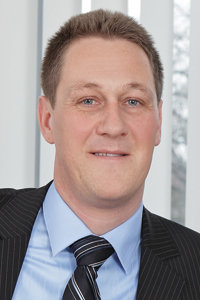
|
| Frank Temme, co-managing director, Hansel Processing |
Hänsel Processing GmbH traces its heritage back to the well-known German company, Otto Hänsel, which was founded in 1911. With more than 100 years of experience in supplying confectionery processing equipment, Hansel Processing remains one of the few companies emboding such a cherished tradition as well as expertise in this field.
Nowadays under the control of managing directors Heiko Kühn and Frank Temme — truly dedicated professionals who have spent most of their working careers in the confectionery industry — the company operates worldwide, backed-up by a strong network of agencies and well-supported by excellently skilled regional sales managers at its main office in Hanover, Germany.
In addition, its French business partner, Proform, known worldwide as a leader in the marketplace for extrusion, forming, cooling and unique production solutions, adds another valuable dimension in confectionery processing equipment to the company’s capabilities.
This dynamic combination of experience, knowledge and close communications with customers is Hänsel Processings´ first step in creating new developments for the industry. It represents a continued commitment to meet new challenges in the market, one that’s evidenced by the company’s ongoing expansion of its R&D programs as a means of meeting customers´ needs for innovative new products.
Some of the company’s latest developments include the following:
The Sucroliner, the largest hard candy line in the world with capacities of up to 4,000 kg/h throughput, features four sugar ropes, each with different color/flavor options that can be produced simultaneously. With its patented discharge and mixing system capable of producing a sugar/glucose ratio of up to 70:30 and its vacuum of minus 0.98 bar (which is the highest in the industry) the Sucroliner truly represents yet another milestone of innovation. It is optionally equipped with an energy recovering system. During the cooking process, the evaporation energy is recovered and then used to pre-warm the slurry and other functions.
The Strada candy die forming unit enables the customer to produce a seamless product which allows more effective packing into blisters, which play such a critical role the nutraceutical, medical and premium confections category. The most recent upgrade to Strada involves the inclusion of new RFID technology on the unit, providing the customer a quick changeover for different product shapes without manual adjustment of the rope sizer, batch roller and forming machine. The RFID transfers all product specific information to the PLC, which enables all adjustments to be done automatically. As a result, rework is reduced and a shorter start-up and changeover is provided.
Hänsel Processing’s traditional and at the same time highly innovative machines are designed for maximum productivity and enhanced by such features as short changeover times, long maintenance intervals and uncomplicated, fast service.
A user-friendly design guarantees continuous high outputs even after a short period of operational adjustments, not only for high quality hard candies (center-filled, aerated, laminated, milky, sugar free, medicated, specialities), but also for all kinds of other sugar products, including jelly and fondant (gelatin, agar agar, pectin, gum arabic, starch, fondant crème, bakery fondant, milk fondant, fruit fondant), toffee (milk caramel, éclair, fruit candies, chewy candies, caramel layers, specialities), and bar (foam sugar, candy bars, granola, torrone, halwa) items.
Hebenstreit: Sharing ideas, experience, expertise
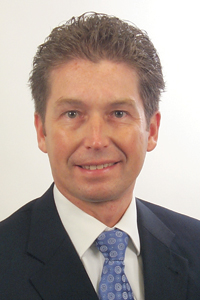
|
| Christian A. Werner, general sales director, Hebenstreit |
As a world leader in the innovation of new wafer concepts, Hebenstreit is constantly developing its machines in association with its worldwide customer base. These innovations are to not only improve the performance and the capacity of Hebenstreit equipment, but to develop new products for an ever- expanding market.
The world is constantly looking for new and unique products where the wafer forms a crispy base. Hollow wafers are ideal for carrying a range of fillings such as creams, pralines, jams and caramels, while flat wafers can be used to carry granular fillings to create healthy low fat snacks.
Hebenstreit equipment is currently used for the production of most types of flat and hollow wafers, moulded wafers, cream-filled wafers, caramel wafers, crisp/rye and communion bread.
Our range of equipment starts with small capacity compact lines and extends to high-capacity, super-sized lines for large scale production. In addition to the wafer baking line, Hebenstreit also supplies complete systems for the preparation of the wafer batter, including raw material handling systems and cream preparation lines with rework systems.
All Hebenstreit wafer baking machines are supplied with the very strong and robust baking plate carrier that ensures that wafers are baked within a very precise tolerance. The proven technology of using a baking plate carrier in combination with the baking plate has been upgraded.
Using newly designed adjustment features, the evenness of the wafer sheets can be maintained over many years of production. This is of great importance when wafers are being processed into moulded products where the accuracy of the wafers leads to a very efficient usage of chocolate.
With the ever increasing cost of gas and to meet the stringent environmental standards required from all modern manufacturers, Hebenstreit has continued to develop their machines to reduce gas consumption and lower CO production.
The reduction of up to 25% in gas consumption helps wafer producers maintain profit levels, while the reduction of CO helps customers meet demanding environmental standards.
In cooperation with some of our major customers, Hebenstreit has been undertaking a program of implementing the TPM philosophy to their production lines.
TPM involves a complete reassessment of the operation and maintenance of a wafer production line from the view point of the operator and the maintenance engineer. This has led to a number of minor but very significant improvements to the line that help simplify the operation as well as cleaning and maintenance.
For example, windows have been installed in areas that need to be monitored from newly introduced central monitoring stations; gauges and controls are clearly color-marked; central lubrication has been added where appropriate; and great care has been taken to make all surfaces easy to clean by removing obstructions and eliminating trap points.
The merging of the German-based Hebenstreit GmbH (Frankfurt) and Hebenstreit-Rapido GmbH (Dresden) was completed last year and work continues on improving the assembly facilities in the Frankfurt site while the Dresden site is enjoying a significant investment in new state-of-the-art machining centers.
This reorganization — along with experience that dates back more than 110 years — has created a company that is even stronger than before. Our customers will benefit from a quicker response to their needs, higher efficiency and improved support from project conception through to implementation and after sales support.
Hosokawa Bepex: Customer collaboration drives innovation
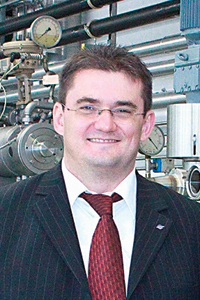
|
| Wolfgang Pforsich, managing director, Hosokawa Bepex |
Innovation, continuous improvement and market-oriented development characterize Hosokawa Bepex worldwide as a powerful producer of systems for the confectionery and bakery industries.
In this field, the German machine engineering company is well-known for being a reliable partner that involves its customers in developing innovative solutions.
“One of our key skills is supporting our customers in designing new products,” says Wolfgang Pförsich, managing director of Hosokawa Bepex. “Customers from all over the world appreciate being involved in developing new applications.”
For this purpose, the well-equipped technology center with an experienced R&D team is available year-round, working at capacity since more and more customers want to be involved in development and surveying the complete process — from hygiene to energy conservation, manufacturing efficiency, maintenance and service; from output to flexibility.
“Any solution developed in our technology center can be up-scaled and realized without any risks,” he says, “This has been proven over decades and is a fact that we stand by.”
To support this claim, a team of experienced engineers from different disciplines such as process technology, food technology, mechanical engineering and control engineering are at the customers’ disposal.
Involving customers requires having a sense for trends. One major trend is still ongoing — the unrelenting demand for hygienic design. Therefore Hosokawa Bepex has — in cooperation with customers and end users — started a new line of hygienically designed machinery. This new line sets new standards with regards to components, material and overall design in simplifying cleaning, changeovers and maintenance.
Thus, Hosokawa Bepex is now able to provide a complete line in hygienic design for chocolate and cereal bars. In this instance, it’s not a case of existing machinery being adapted or improved. Rather, totally new machine types have been developed. The latest innovations in this field are the new fanning/spreading conveyor FA-EB/HD as well as the new bottomer and enrobing machine type Chocoat HD.
Hygienic design is an essential factor for all innovations made by Hosokawa Bepex. This results in new solutions for reduced cleaning efforts due to excellent accessibility, shorter changeover times, external energy supply and safe separation between product items and non-product items.
For high-efficiency cooling tunnels HKK/HD as well as for easy-clean forming and cutting equipment, hygienic design has already been supplied for several years.
Next to hygienic design, a further tendency becomes apparent: The increasing demand from markets outside Europe and North America. One of the strongest growing markets is Asia, including India and China. Hosokawa Bepex has already responded to this trend and has opened a new office in this area. It’s also active in Latin America, another emerging market that’s an area of increased demand.
The Ladco Group: Investing in ongoing improvements

|
| Stuart Andersen, managing director, The Ladco Group |
The Ladco Group of companies consists of three units: MacIntyre Chocolate Systems and Beetz Mixing Technology (based in Scotland, UK) and Petzholdt Heidenauer (located in Dresden, Germany).
The Group has been extremely active during the last three to four years developing a range of small-scale, cocoa bean processing equipment – 50kg and 250kg per hour systems, for the small entrepreneur.
The new line encompasses bean roasting, winnowing, pre-grinding, sterilizing and alkalizing for color optimization. The company is currently developing a small press to work with this compact system.
For customers requiring large-scale bean processing equipment, Petzholdt Heidenauer has also been redesigning its existing range of equipment, roasting and winnowing in particular. It is also improving its very successful presses, which are being used worldwide. Petzholdt Heidenauer continues to supply all the spare parts for the Nagema range of equipment, prior to 1995.
To meet the latest energy efficiency standards, the company has been altering it equipment, replacing drives and motors with more energy efficient units. It has also developed a new Super model 5 Roll Refiner 1800, which delivers nearly 30% more output than the current standard 1800 while using less energy. Work also continues on further developing and simplifying the Continuous Conching System.
In Scotland, both MacIntyre Chocolate Systems and Beetz Mixing Technologies have also been continuously developing their range of equipment to suit today’s market. The compact One Shot Chocolate Moulding Machines have been expanded to include ball-shaped products (on the stand-alone moulding machines) by introducing a program lift table. They are also building Chocolate Drop & Chip lines that are up to 1,500 mm wide for high production outputs.
Their Lentil Roller Moulding lines are also available up to 1,500 mm wide (600-mm diameter rollers) for maximum lentil production.
The company is completing a new R&D technical center, which will open in October. Named Chocolate International – School for Excellence, the center will be open for all their Group’s customers worldwide as well as for its professional personnel (for training purposes on specific processes).
The center will also be used for product development for their customers worldwide. It will include a reception area, an analytical laboratory, a full bean processing facility, full chocolate manufacturing facilities, down-line processing equipment, some wrapping equipment and an introduction into robotics. Further details will be announced in October.
Royal Duyvis Wiener/ F.B. Lehmann: A strong innovative combination
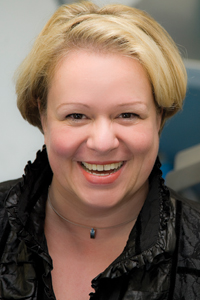
|
| Mirjam van Dijk, managing director, Royal Duyvis Wiener B.V. |
During the ProSweets in Cologne, Royal Duyvis Wiener and F.B. Lehmann exhibited a variety of innovations for turnkey solutions and “stand-alone” machinery for the production of cocoa, chocolate, compound, nut pastes and crèmes.
One of these innovations was the F.B. Lehmann 2 & 5 Roll Refiner, introduced last year. The engineering has been finalized and the machine has — through its efficiency, both in capacity as well as product fineness — convinced customers of its excellence.
Other recent innovations from F.B. Lehmann are its nib batch and continuous roasters.
In the continuous nib roaster, the cocoa beans are conveyed in counter flow principle to the hot roasting air from top to bottom, moving downwards from level to level.
During this process a maximum product temperature of 135° C is achieved. The very low temperature differences between the roasting air and the product during this process ends up producing a very homogenously and gently roasted product.
As a result, there is no negative flavor or color impact as the product is always charged with pure fresh air continuously (no recirculation of roasting air).
In batch nib roasting, the nibs are gently mixed in a roasting drum. Heat transfer takes place exclusively by heat conduction, where the product has direct contact with the drum surface. This results in a slow drying process.
As a result of the indirect heating, the product does not come into contact with combustion gasses. The heating media are efficiently conducted around the drum, which ensures a uniform temperature at the entire length of the cylinder.
During roasting, water or other solutions can be added. With a slowly rising temperature, the moist thermal atmosphere ensures an efficient reduction of the bacterial count.
In 2012, F.B. Lehmann became a center for special mechanical engineering as well as a well-known player in the global confectionery industry. The Technology Center in Aalen, German was renewed and modernized in February. As a result, all tests and recipe developments performed at the Technology Center in the Netherlands can now be done in Aalen as well.
For the fourth straight year, Royal Duyvis Wiener was chosen as one of the Netherlands’ “Best Managed Companies” in 2012, qualifying for Gold Member status.
At F.B. Lehmann and Royal Duyvis Wiener, it’s our goal to keep developing innovations in the engineering, manufacturing and installation of production machinery for the cocoa and chocolate industry. In this manner we can stay focused on customer’s wishes worldwide.
Sollich: A legacy of innovation
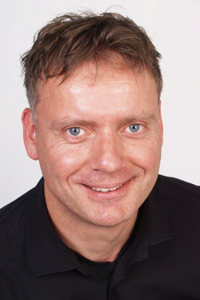
|
| Ulrich von Dosky, area sales manager (UK/Ireland/Africa) Sollich KG |
The Sollich Co. — founded by Robert Sollich in 1920 — began as a bakery and pastry manufacturer. In 1928, Robert started to invent the first candy machines because no appropriate equipment existed to meet his needs. This was the beginning of the innovative confectionery machinery development that Sollich stands for today.
Drawing on its experience as a confectionery and candy producer, Sollich combines machine and processing know-how with an “innovative view into the future.” The company does not build a machine for the purpose of running a machine; rather it builds a machine to produce a finished product.
Thus, innovation at Sollich isn’t about solving a problem by adding or changing a component; innovation at Sollich begins with the finished product for our customers. The company then evaluates the processing steps and necessary components to tailor-made the equipment to address the client’s needs. Thus, it’s no surprise the company is investing significant resources and effort into its R&D center and laboratory to continuously optimize our equipment.
In having the widest range of equipment for the chocolate and candy industry under one roof, Sollich — in conjuction with its commitment to innovation and ongoing technological developments — is laying the cornerstone for the company’s leading position worldwide.
For example, the development of the Turbotemper — a tempering process that changed the view of tempering completely and set standards throughout the entire industry — was probably Sollich’s most significant innovation. As a result, the Turbotemper became the most successful tempering machine in the world. With the latest members of the disc tempering family, the Turbotemper “TT 100 B” and “TT 200 B”, manufacturers now have a complete range of tempering units ranging from 100 kg/h to 18 tons/h available.
In addition, Sollich continues to manufacture the “TT Airo” for those customers looking to temper and aerate chocolate within one machine. This process continues to gain favor among chocolate manufactures because aeration provides interesting textural qualities within chocolate while simultaneously reducing volume.
The company’s Flavor Dosing systems also enhance value to confectionery products by adding colors, flavors or even solid ingredients.
Those looking to introduce rework during processing operations can tap into Sollich’s latest innovation, the rework tempering machine “RWT,” which enables even rework with inclusions to be reprocessed.
Known for its enrobers for chocolate, compound, caramel or even fondant, the company’s Minicoater, Midicoater and Enromat feature patented licking rollers that are built without straps. All models can be used with auxiliary equipment such as a decorator, a sprinkler and a truffle rolling device.
The drum coating applicator machine, theSollcotop, is suitable for almost all fluid enrobing materials such as chocolate, compound, caramel stripes or hot and cold icings.
In addition, Sollich manufactures the high end Conbar bar forming line with slitting, spreading and cutting of cereal and candy bars as well as a newly developedMiniconbar for smaller production capacities.
The company’s equipment for the depositing of caramel, jelly or creams and nut paste onto biscuits features a newly developed sandwiching unit, the Sollcocap. A complete range of praline and cluster forming machines, including the Sollcoform SFP, rounds out the broad range of equipment available.




